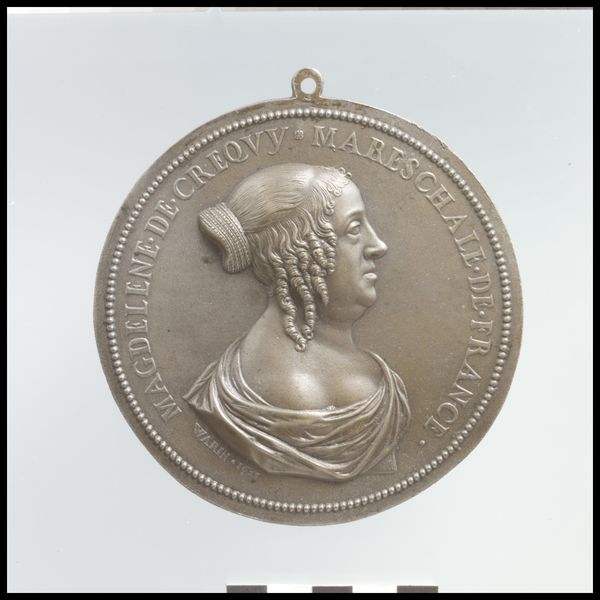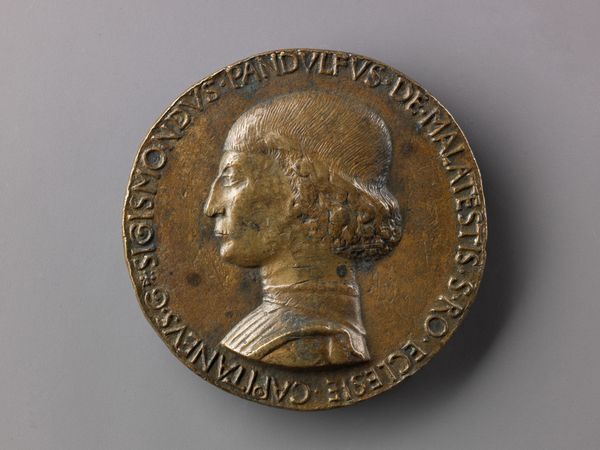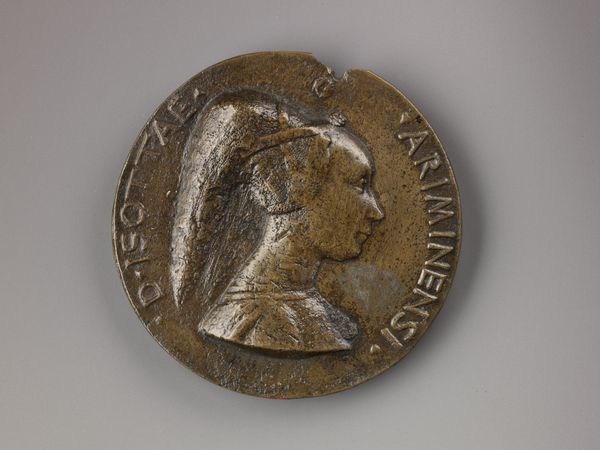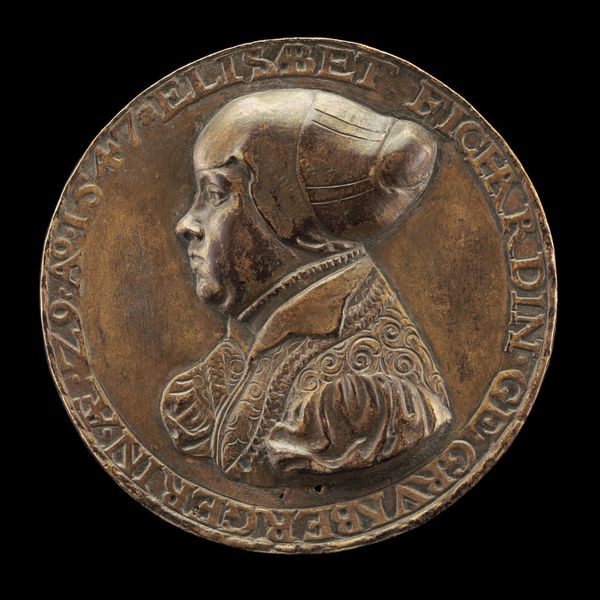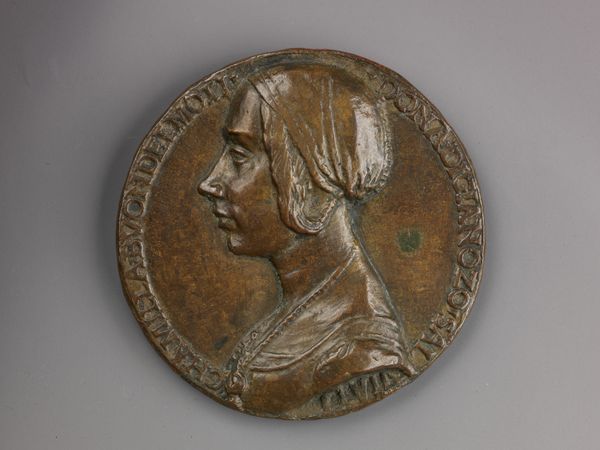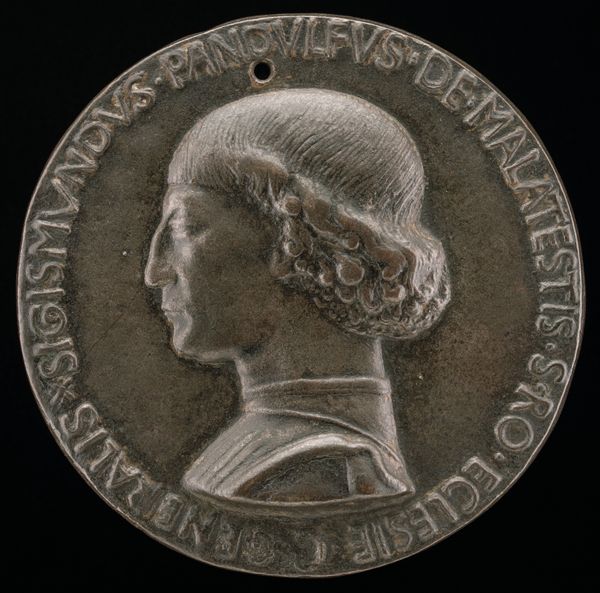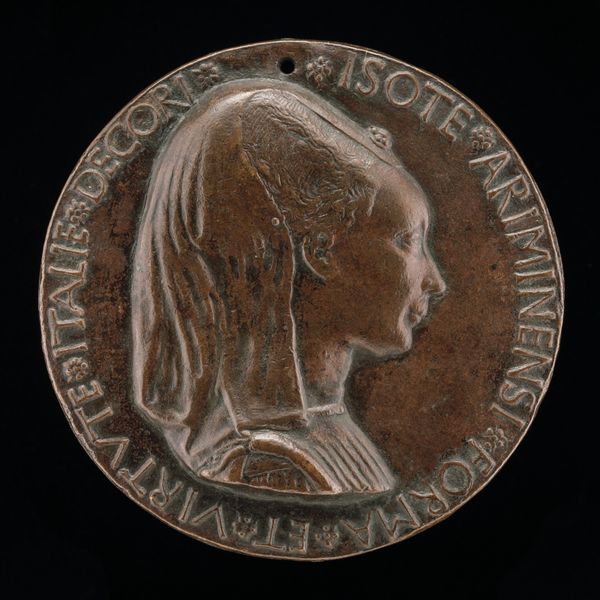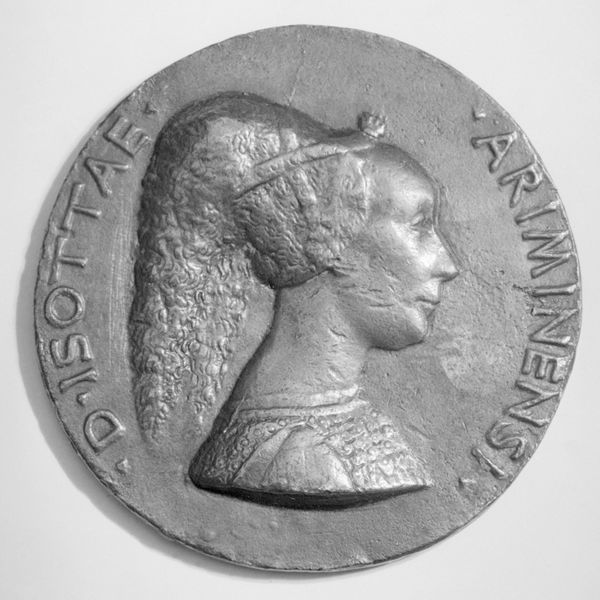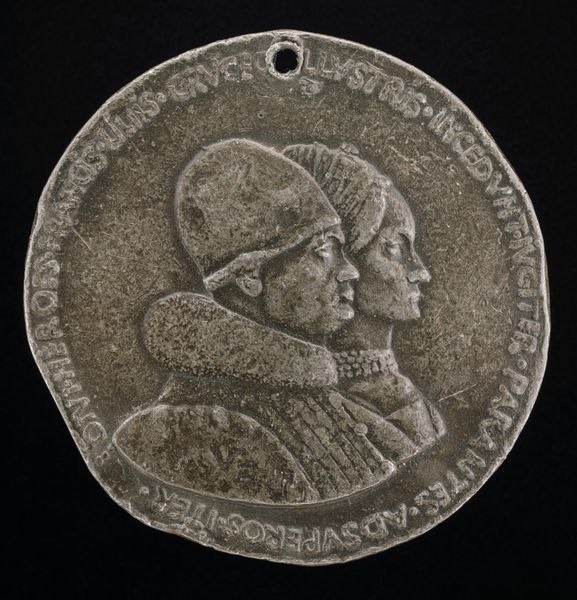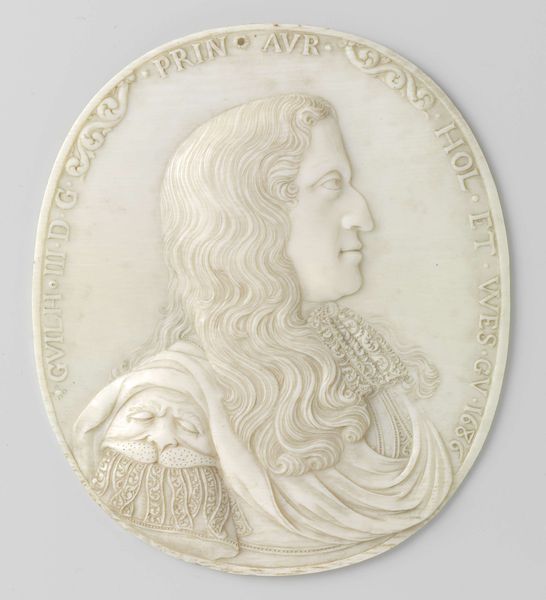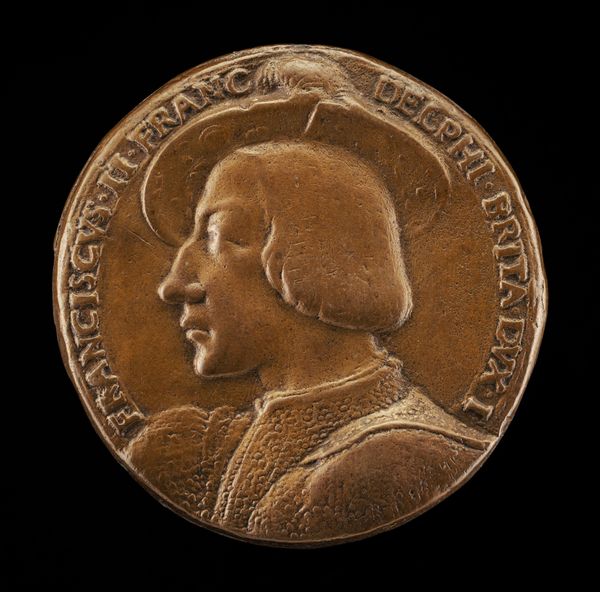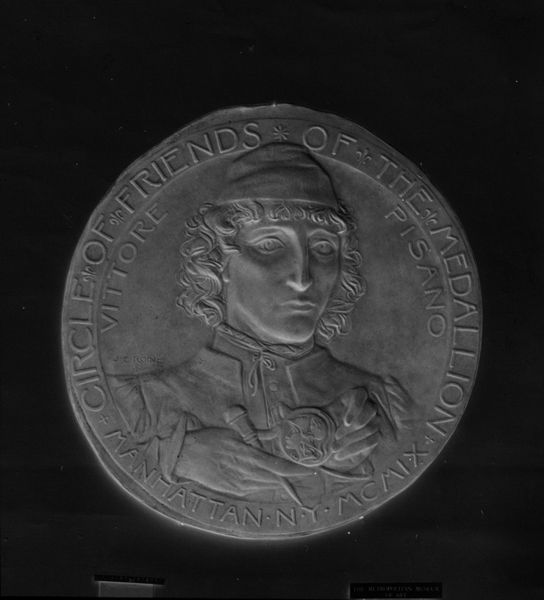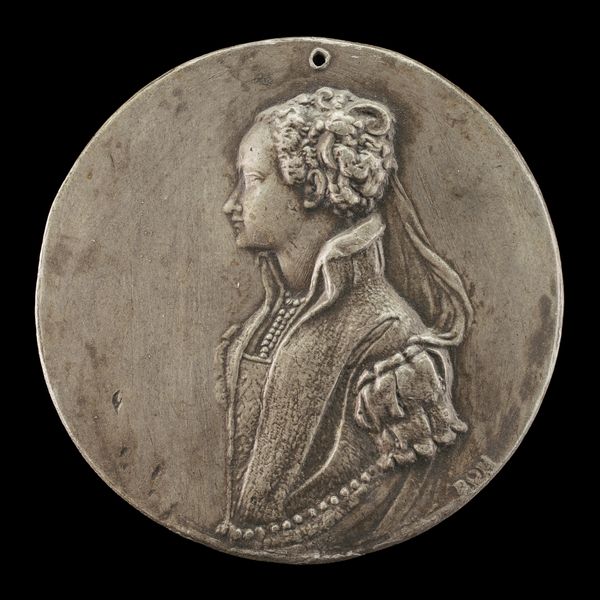
relief, sculpture, marble
#
portrait
#
relief
#
sculpture
#
marble
#
italian-renaissance
Dimensions: diameter: 60.96 cm (24 in.)
Copyright: National Gallery of Art: CC0 1.0
Curator: Here we see a marble relief of "Lodovico Sforza, Duke of Bari" created by Benedetto Briosco around the early 1490s. What are your first impressions? Editor: Stark and austere. It’s a flat rendering despite being three-dimensional, cold. Marble lends itself to an unemotional portrayal; one that speaks of permanence. Curator: Interesting, thinking about its permanence...Lodovico Sforza held considerable power during the Italian Renaissance. He navigated political landscapes marked by familial strife, including the mysterious death of his nephew who was potentially murdered. His actions certainly impact how we view him as a subject in a portrait, even centuries later. Editor: Marble, of course, was hugely important in the Renaissance—its use evokes a conscious lineage reaching back to antiquity, to Roman ideals of power. Its sourcing, transportation, the sculptor's labor, that is quite removed from Sforza, even as it is intimately intertwined. The selection of the stone itself seems significant. Curator: Precisely. And think of the labour that was likely unpaid to maintain the sculpture for a Duke that perhaps lacked true honor as he climbed to the height of political games. What do you think about the roundel, or the round shape that encircles him? Editor: Its geometry has a classical feel, sure. But it also isolates him, doesn’t it? Like he’s pressed under glass. The way the text frames him…it’s as if he is trapped within the inscription of his name and title. Curator: Considering this detail, and what we know about the sitter, does the carving embody some early conceptualizations about gendered power during the Italian Renaissance? Editor: The way the light plays across the smooth surfaces of the marble also speaks volumes about production. This object serves its purpose to create and broadcast power. I suppose what interests me most is less the gender politics, and more how this came into being; through extraction, manufacture, display, the exploitation of labor. Curator: Indeed. Considering both perspectives allows us to understand a broader social implication within the Italian Renaissance. Editor: A fuller understanding, for sure. Examining material realities brings history to life, perhaps a less palatable one than this idealized representation.
Comments
No comments
Be the first to comment and join the conversation on the ultimate creative platform.
